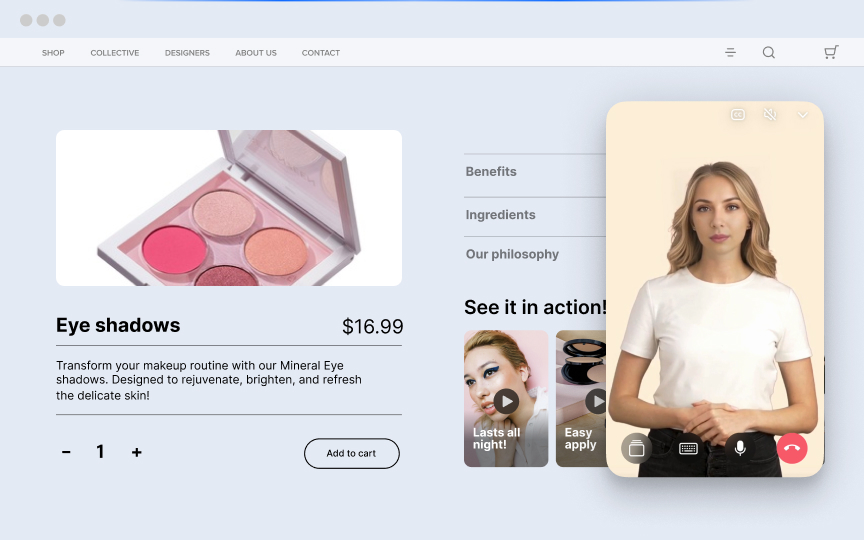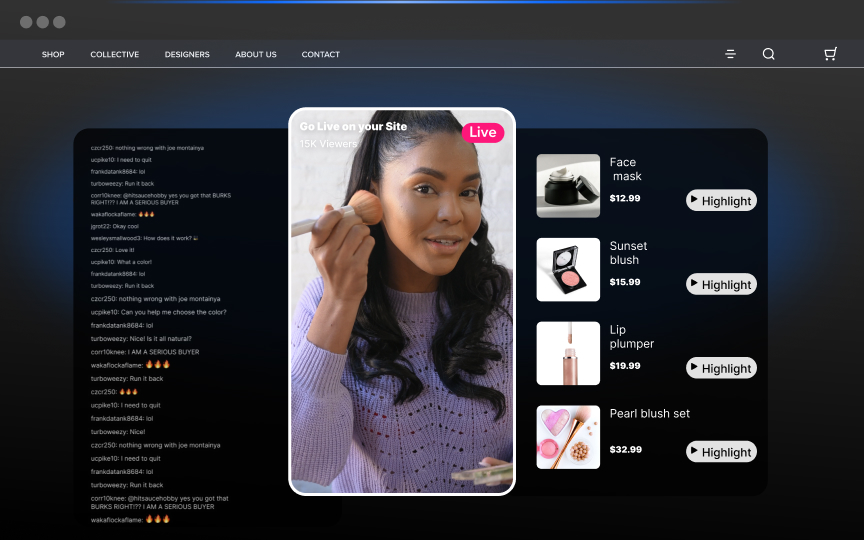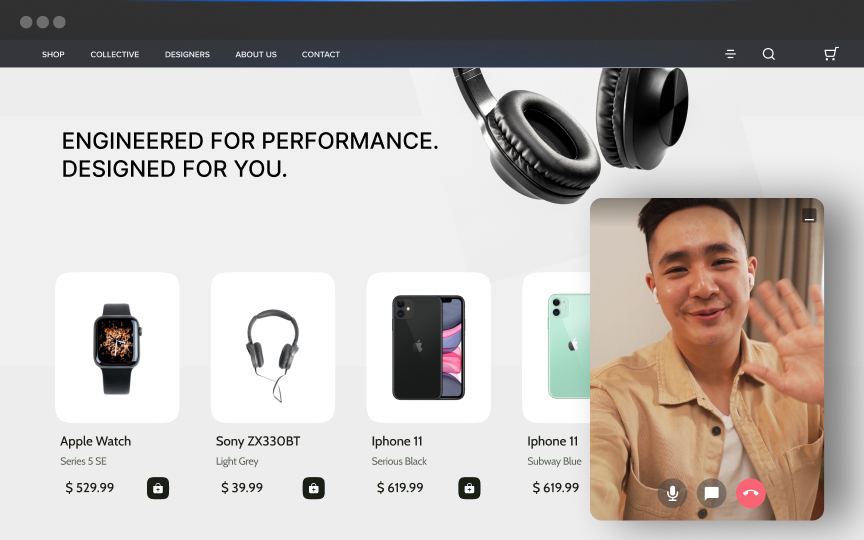In 2022, personalization and adapting to the cookieless world were key focuses for marketing. Marketing trends 2023, will see a shift towards focusing on customer conversions.2022 witnessed the rise of interactive and experiential elements to boost online retail experiences. Furthermore, video marketing was particularly successful, with 41% of marketers reporting a high return on investment.Here are the key marketing trends for 2023 that every marketer should be aware of.
2023: A New Frontier for Marketing in eCommerce
As the new year rolls in, brands are busy crafting marketing strategies for 2023. For brands looking to maximize their impact, building a foundation around these 2023 marketing trends could give them a headstart. Let’s explore what 2023 will unfold for eCommerce marketers.
Voice Technology Will Go Big in 2023
Voice technology has been revolutionalizing the way consumers shop online, making the process faster, easier, and more convenient. Furthermore, Statista estimates that there will be 8 billion voice assistants in 2023.Ecommerce companies use voice technology to let customers search for and purchase products with their voice. Further, this technology can improve the customer experience by providing personalized recommendations, answering customer questions, completing transactions, and allowing customers to access their account information easily.Patròn, a tequila brand, has successfully used voice search for branding. Customers can use smart speakers to instruct their digital assistant to "ask Patròn for a cocktail recipe." In addition to increasing brand recognition and visibility, customers can purchase the product from recipe results.[embed]https://www.youtube.com/watch?v=PDxeIubMrI8[/embed]
The Rise of Video Commerce
The emergence of video commerce has given brands the ability to tell their product story and simultaneously drive conversions.Coresight Research predicts that the livestream shopping market will triple in the next few years, increasing from $20 billion to $57 billion by 2025. Retail brands that use a combination of livestream shopping and short shoppable videos on their website can expect an increase in engagement, conversion, repeat visits, and a reduction in customer acquisition costs.Brands are expected to use more video-enabled shoppertainment campaigns on their websites as they realize the power of video commerce in building communities, engaging with an audience with high purchasing intent, fostering customer loyalty, and driving sales. With video commerce, brands will prioritize building their own media universe on their website rather than just using social media.Angela Caglia, a beauty and skincare brand, increased conversions by three times by using video storytelling and instant checkout within the video on their website. They implemented this strategy on the homepage, category page, and product page.[embed]https://firework.com/wp-content/uploads/2022/11/WEB-Angela-1080x680-V1.mp4[/embed]
Interactive Video Advertising on the Open Web
Interactive video ads are short videos that engage the viewer by allowing them to interact with the content. This could involve clicking on a link, answering a question, making a selection, or purchasing a product.Experts expect interactive video advertising to become more immersive in 2023 with the use of virtual and augmented reality technologies and personalization to create content that resonates with the target audience.Video ad spending is expected to continue growing and reach USD 74.88 billion by 2023.Nordstrom, a department store chain, has created shoppable ads featuring their products on their own website as well as on third-party websites. These ads allow consumers to easily discover and purchase products from the interactive video ads.
First-party Data Ownership Will Come into Focus
Online retail brands have started leveraging first-party data, with 52% of marketers using digital experiences to capture them. The website is still king. Brands will focus on bringing traffic to their site, and then converting the user traffic into sales.How? By creating a sticky, mobile-optimized website experience with video at the forefront.With shoppable videos, in-video checkout technology and livestream shopping, conversion-first approach is going to be top of mind for consumers.Audpop Founder and CEO Paige Williams emphasized the need for videos for a website "In today's world, every business needs engaging video on their website, for their social media channels, and in their marketing." The brand boasted a 500% increase in customer purchases with short, snackable versions of its premium content on its website.

Metaverse Will Power eCommerce Experiences
Digital advancements in Artificial Intelligence (AI), Extended-Reality (XR), Augmented reality (AR), are among the key marketing trends 2023 will further see. So, when Mark Zuckerberg announced the Metaverse, retail brands quickly jumped on the Meta-wagon, approaching an experiential way of selling. Customers can interact with products in virtual stores or collect tokens for rewards in these XR experiences.The metaverse in e-commerce market is estimated to grow at a CAGR of 39.65% between 2022 and 2027Tech-giant Samsung set up a digital version of its New York City flagship store on Decentraland, a virtual destination for digital assets. They planned product launches and events through this three-dimensional experience for customers.[caption id="attachment_23117" align="aligncenter" width="662"]

Source[/caption]
Generative AI Will Step up a Notch
Brands are toying with generative AI to improve customers’ online shopping experiences and drive more sales. With improved natural language processing capabilities, Generative AI is setting the foundation for the next wave of conversational commerce. Additionally, generative AI technology can track a consumer's on-site behaviors, such as clicks, zooms, swipes, and bounces, and suggest related or complementary products that the customer may be interested in.Ecommerce brands can use generative AI to personalize product recommendations, design products, improve customer service, and create unique, optimized product content that drives sales by training a large set of existing products and consumer behavior data model.Stitch Fix is an online personal styling service that uses generative AI to personalize clothing recommendations for individual customers. The company's algorithms analyze a customer's past purchases, style preferences, and body measurements to generate a list of customized clothing recommendations.[caption id="attachment_23118" align="aligncenter" width="750"]

Source[/caption]
Influencer Marketing Will Be Approached from an ROI Lens
Brands have been tapping into influencer marketing to drive product discovery and brand value for half a decade now. However, in 2023, the focus will be on approaching influencer marketing from an return on investment (ROI) angle. Brands will invest more in unconventional, micro-, and nano- influencer campaigns that increase conversion and engagement with highly engaged audiences.For example, American Girl’s livestream in partnership with celebrity and figure skating gold medalist Tara Lipinski garnered them 25% engagement rate, demonstrating a strong purchase intent with just one livestreaming session.

Wayforward
Marketing in 2023 for online retail brands will differ from previous years, with an increased focus on profitability, sustainability, immersion, and personalized but community-led experiences. Consumer behavior has evolved, and yesterday's marketing strategies will not make the cut.Hence, it is imperative that brands start adapting to the new marketing trends 2023 has to offer. With a holistic approach towards video commerce, experiential marketing and immersive offerings, brands can energize their marketing efforts without losing focus on revenue and growth.
FAQs
What is the predicted marketing trend for voice technology in 2023?
Voice technology will be a big focus in 2023, with brands using it to improve the customer experience by providing personalized recommendations, answering customer questions, completing transactions, and allowing customers to access their account information easily.
What is video commerce, and why is it important for marketers in 2023?
Video commerce is the use of video to tell a product story and drive conversions. It is expected to become increasingly important in 2023 as brands use a combination of livestream shopping and short shoppable videos on their website to increase engagement, conversion, repeat visits, and reduce customer acquisition costs.
What are interactive video ads, and what is the expected growth in video ad spending by 2023?
Interactive video ads are short videos that engage the viewer by allowing them to interact with the content. Video ad spending is expected to continue growing and reach USD 74.88 billion by 2023.
What is the focus on first-party data ownership in 2023?
In 2023, brands will focus on bringing traffic to their site and converting user traffic into sales by creating a sticky, mobile-optimized website experience with video at the forefront. This will be achieved by leveraging first-party data and using shoppable videos, in-video checkout technology, and livestream shopping to create a conversion-first approach.
What is the Metaverse, and why are retail brands focusing on it in 2023?
The Metaverse is an experiential way of selling that allows customers to interact with products in virtual stores or collect tokens for rewards in extended reality experiences. Retail brands are focusing on it in 2023 because it is estimated to grow at a CAGR of 39.65% between 2022 and 2027.
How can generative AI be used by ecommerce brands in 2023?
Ecommerce brands can use generative AI to personalize product recommendations, design products, improve customer service, and create unique, optimized product content that drives sales by training a large set of existing products and consumer behavior data model.
Unlock Exclusive Insights
By submitting this form, you agree to Firework's privacy policy and consent to receive personalized marketing communications. You can unsubscribe at any time.

































